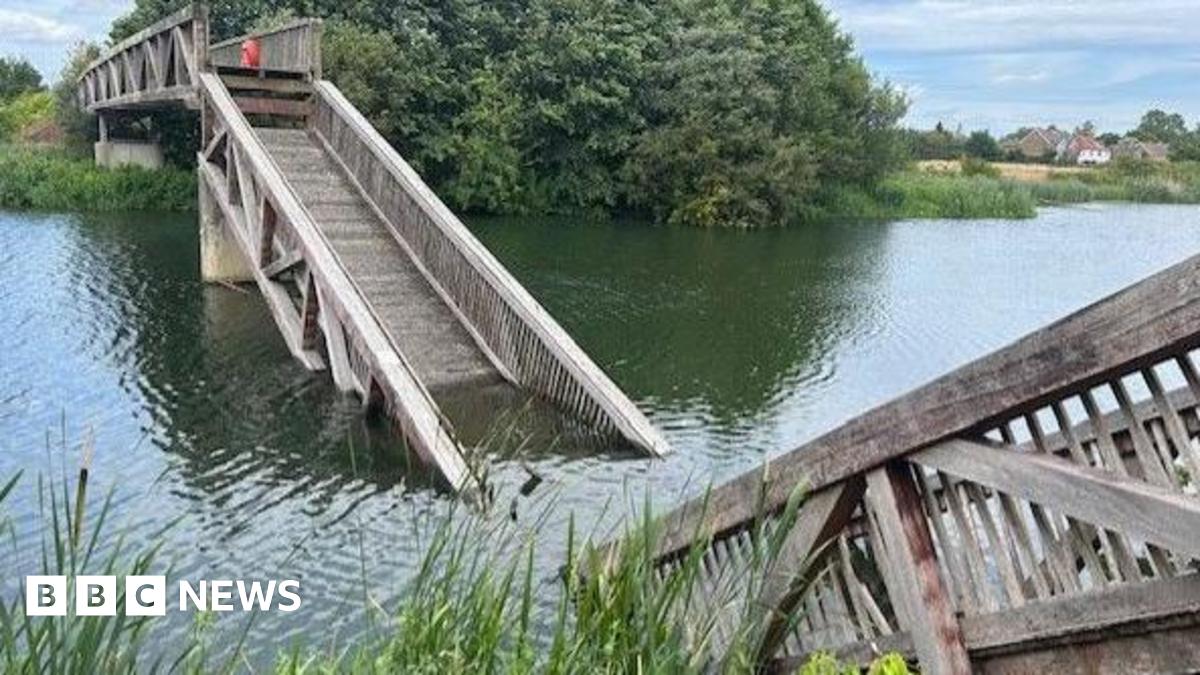Jubilee River Footbridge Collapse: Urgent Safety Review Needed for Timber Structures

TAPLOW, Buckinghamshire – A concerning incident has occurred near Taplow, Buckinghamshire, as the Ashford Lane footbridge over the Jubilee River partially collapsed into the water. This event has immediately raised serious questions and prompted urgent calls for a comprehensive safety review of timber footbridges across the region and beyond.
The collapse, which happened recently, involved a section of the wooden footbridge giving way, sending debris and raising alarms amongst local residents. While thankfully no injuries were reported, the incident highlights a potential vulnerability within the infrastructure and the need for proactive maintenance and inspections.
Structural Concerns and Timber Bridges
The incident has triggered a wider discussion about the structural integrity of timber bridges, particularly those that are older or have not undergone regular maintenance. Timber, while a historically common and aesthetically pleasing material for bridge construction, is susceptible to decay, rot, and insect damage over time, especially when exposed to the elements. Factors like prolonged moisture exposure, fluctuating temperatures, and the presence of fungi and pests can all contribute to the degradation of timber structures.
Experts are now emphasizing the importance of thorough and frequent inspections to identify and address potential issues before they escalate into more serious problems. These inspections should include visual assessments for signs of decay, as well as more detailed analyses of the timber's strength and load-bearing capacity. Non-destructive testing methods, such as ground-penetrating radar, can also be employed to detect internal defects without causing damage to the structure.
Call for Action and Safety Review
Local authorities and bridge maintenance agencies are facing increased pressure to conduct a comprehensive review of all timber footbridges in their jurisdiction. This review should prioritize bridges that are older, located in areas with high moisture levels, or have a history of maintenance issues. The review should not only assess the current condition of the bridges but also develop a plan for preventative maintenance, including regular inspections, timber replacement, and protective treatments.
“The collapse of the Ashford Lane footbridge serves as a stark reminder of the potential dangers associated with aging infrastructure,” stated a spokesperson for the local council. “We are taking this matter very seriously and are committed to ensuring the safety of our residents. A full investigation is underway to determine the cause of the collapse, and we will be working closely with structural engineers to assess the condition of other timber bridges in the area.”
The incident also underscores the need for increased public awareness regarding the importance of reporting any concerns about the condition of bridges or other infrastructure to the appropriate authorities. Early detection of potential problems can often prevent more serious incidents and ensure the long-term safety and reliability of our transportation networks.
This event is expected to fuel a broader debate about the long-term sustainability of timber bridges and the need for investment in modern materials and construction techniques. While timber bridges can be charming and historically significant, their maintenance and safety require ongoing vigilance and a proactive approach to risk management.
This is a developing story and will be updated as more information becomes available.






